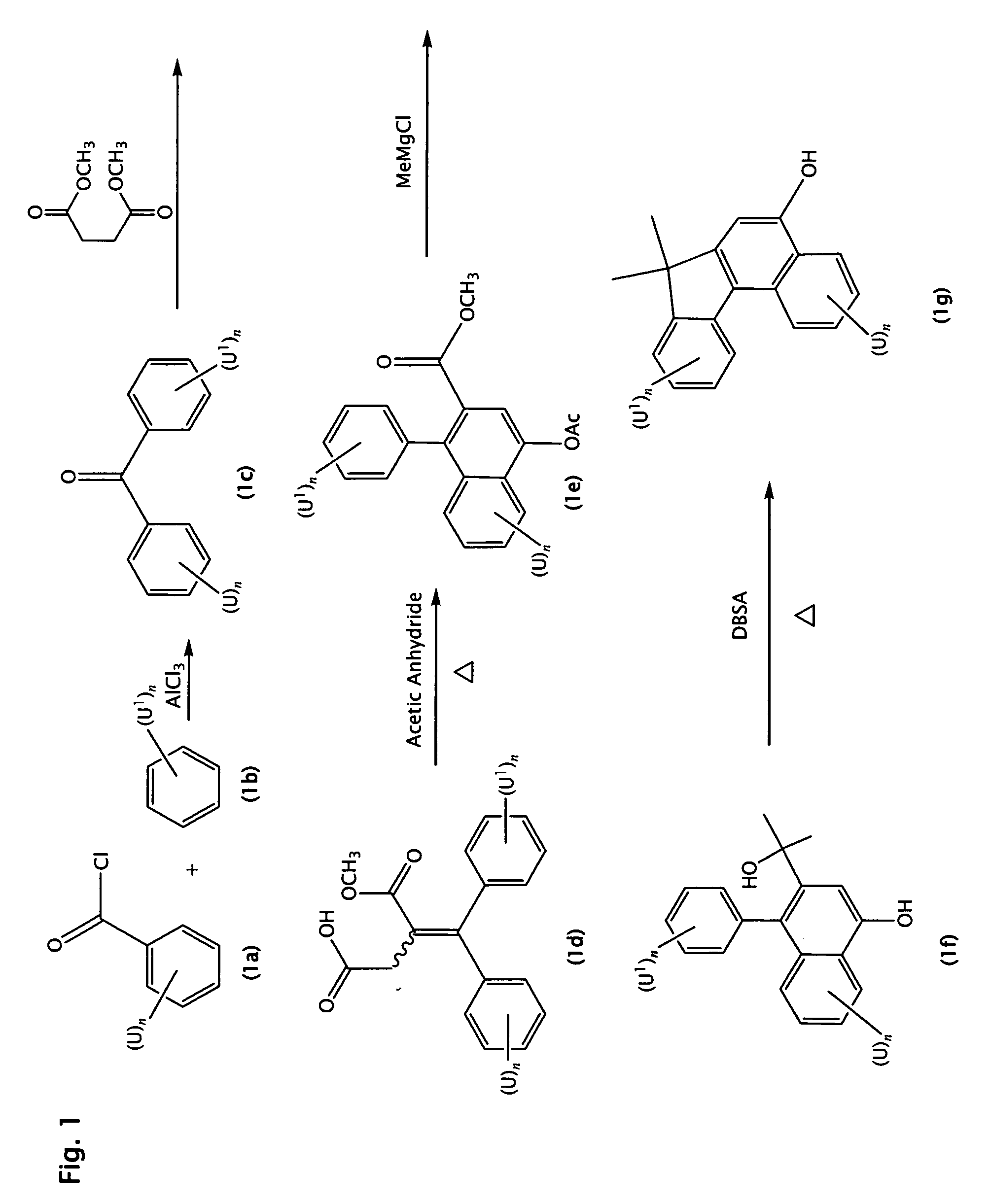Photochromic materials comprising metallocenyl groups
a metallocenyl group and photochromic material technology, applied in the field of photochromic materials, can solve the problem that the vision of the wearer may be less than optimal
- Summary
- Abstract
- Description
- Claims
- Application Information
AI Technical Summary
Problems solved by technology
Method used
Image
Examples
example 1
[0165]Step 1
[0166]Ferrocene (20 g) and benzoyl chloride (15 mL) in 100 mL of methylene chloride were added to a reaction flask fitted with a solid addition funnel under a nitrogen atmosphere. Solid anhydrous aluminum chloride (19.0 g) was added to the reaction mixture with occasionally cooling of the reaction mixture in an ice / water bath. The reaction mixture was stirred at room temperature for 3 hours. The resulting mixture was poured into 200 mL of a 1:1 mixture of ice and 1N HCl and stirred vigorously for 15 minutes. The mixture was extracted three times with 100 mL methylene chloride. The organic extracts were combined and washed with 200 mL of saturated aqueous sodium chloride solution and dried over sodium sulfate. The solution was then filtered and the filtrate concentrated to give 40.0 g of a red oily residue. The product was used in the subsequent reaction without further purification.
[0167]Step 2
[0168]The crude product from Step 1 (40 g) was dissolved in anhydrous dimethyl...
example 2
[0171]The process of Example 1 was followed except that 4-fluorobenzoyl chloride was used instead of benzoyl chloride in Step 1. Mass spectrometry analysis supported a molecular weight consistent with 3-(4-fluorophenyl)-3-ferrocenyl-13,13-dimethyl-3H,13H-indeno[2′,3′:3,4]naphtho[1,2-b]pyran.
example 3
[0172]The process of Example 2 (above) was followed except that 2,3-dimethoxy-7,7-dimethyl-7H-benzo[C]fluoren-5-ol (the product of Example 9, Step 2 of U.S. Pat. No. 6,296,785, which is hereby specifically incorporated by reference herein) was used instead of 7,7-dimethyl-7H-benzo[C]fluoren-5-ol. Mass spectrometry analysis supported a molecular weight consistent with 3-(4-fluorophenyl)-3-ferrocenyl-6,7-dimethoxy-13,13-dimethyl-3H,13H-indeno[2′,3′:3,4]naphtho[1,2-b]pyran.
PUM
 Login to View More
Login to View More Abstract
Description
Claims
Application Information
 Login to View More
Login to View More - R&D
- Intellectual Property
- Life Sciences
- Materials
- Tech Scout
- Unparalleled Data Quality
- Higher Quality Content
- 60% Fewer Hallucinations
Browse by: Latest US Patents, China's latest patents, Technical Efficacy Thesaurus, Application Domain, Technology Topic, Popular Technical Reports.
© 2025 PatSnap. All rights reserved.Legal|Privacy policy|Modern Slavery Act Transparency Statement|Sitemap|About US| Contact US: help@patsnap.com



